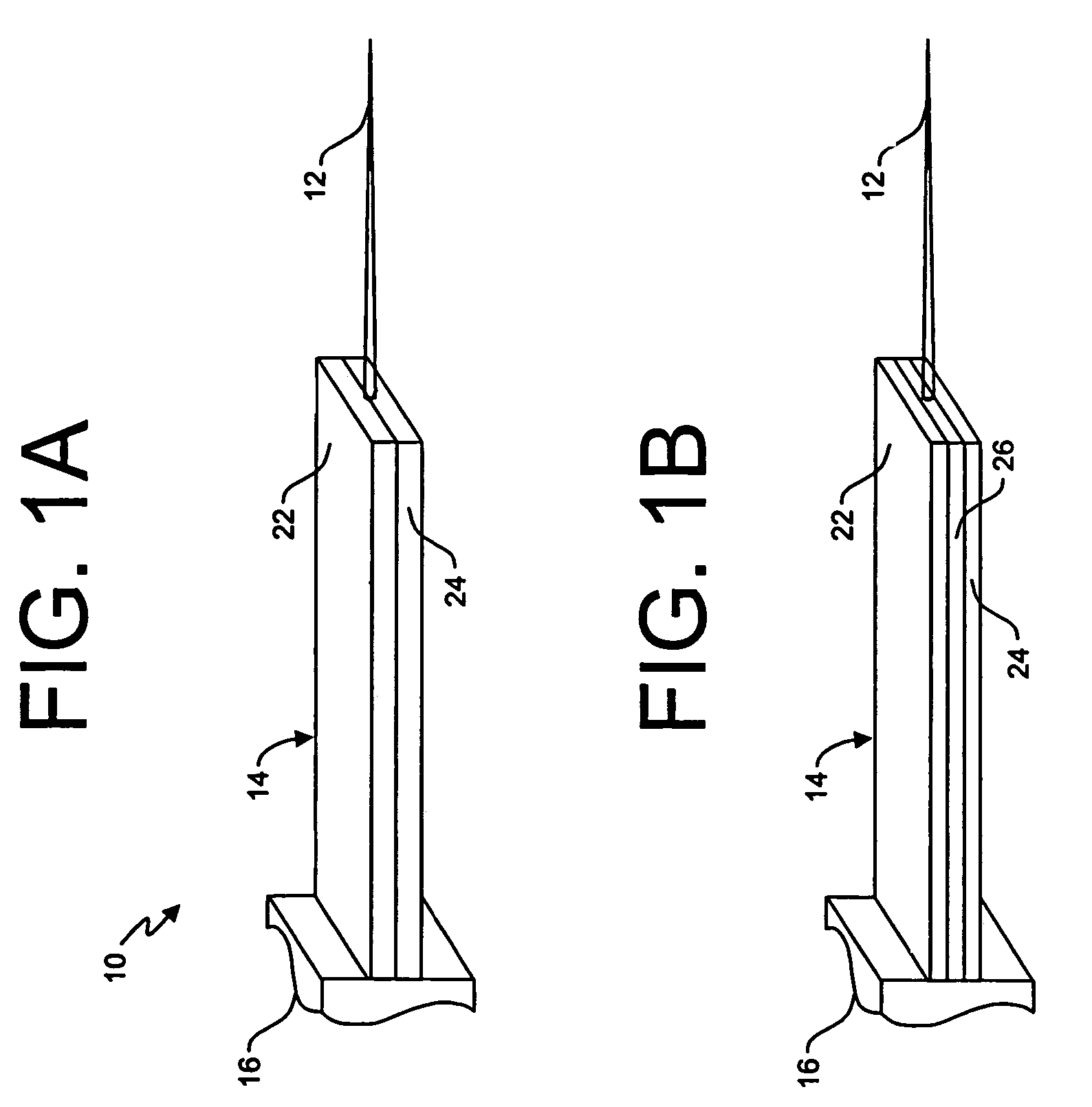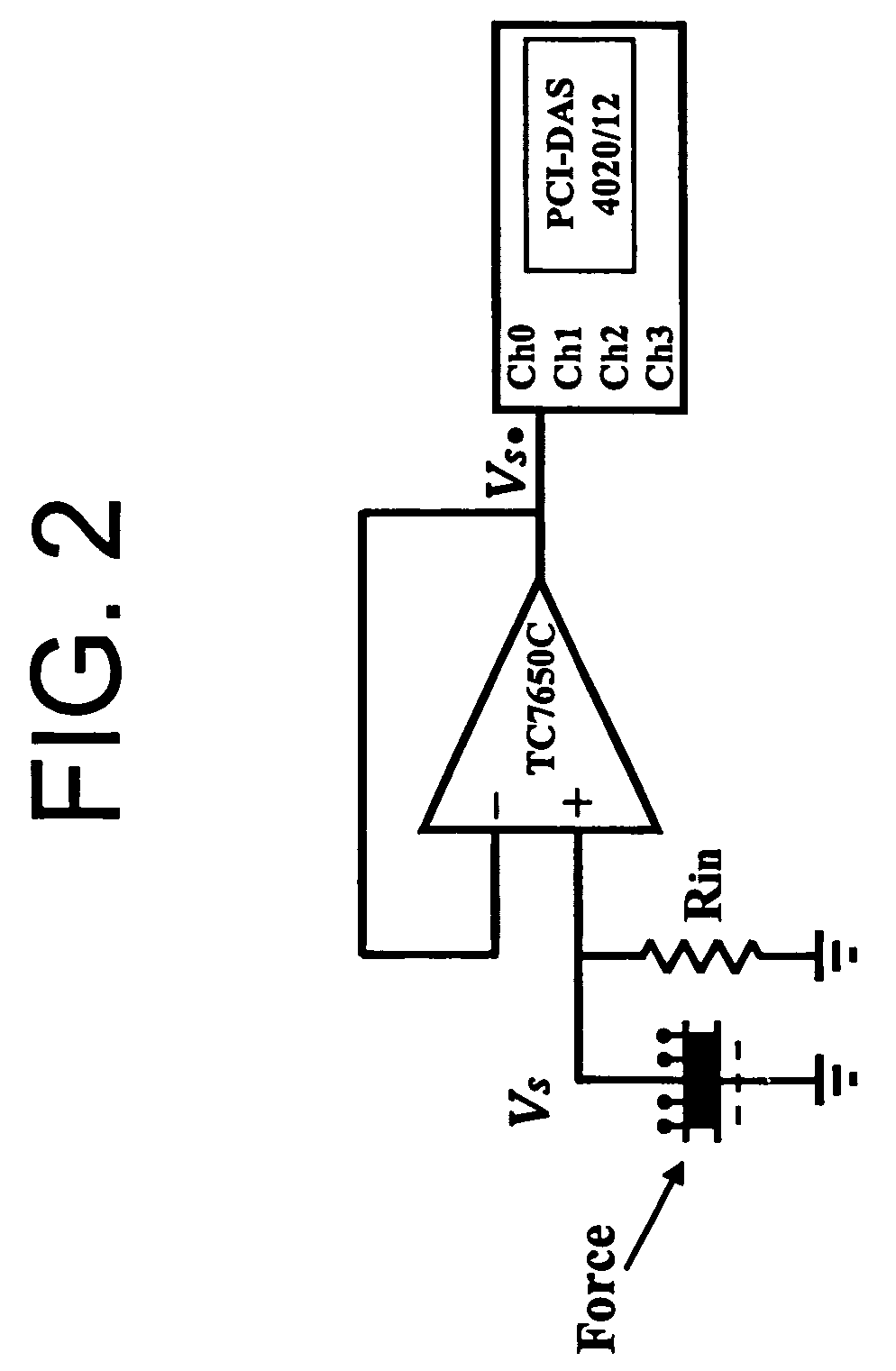Active sensor for micro force measurement
a micro-force sensor and active technology, applied in the field of micromanipulation technology, can solve the problems of inefficient assembly process of micro devices, inability to reliably measure breakage at the micro-newton force range, and inability to develop efficient assembly processes for micro devices, etc., to achieve fast balance of deformation, improve sensor stiffness, and improve the effect of accuracy
- Summary
- Abstract
- Description
- Claims
- Application Information
AI Technical Summary
Benefits of technology
Problems solved by technology
Method used
Image
Examples
Embodiment Construction
[0012]FIGS. 1A and 1B illustrates an active micro-force sensor for use on a micromanipulation device. The force sensor 10 is comprised of a rigid contact tip 12 which extends outwardly from a cantilever 14. The cantilever 14 is in turn coupled to an end of a micromanipulator 16. It is readily understood that the contact tip 12 may have different shapes depending on the applicable micromanipulation tasks.
[0013]In accordance with the present invention, the cantilever 14 is a composite structure having at least two layers 22, 24 made from a piezoelectric material (e.g., polyvinylidene fluoride (PVDF) or lead zirconate titanate (PZT)). In operation, the top layer 22 acts as a balance actuator, while the bottom layer 24 works as a sensing device as will be further explained below.
[0014]In FIG. 1A, the two layers 22, 24 are bonded directly together using an insulating, waterproof, high strength, and elastic adhesive (e.g. Loctite® Super Glue Gel, Epoxy Gel or RTV Silicone) or other known ...
PUM
| Property | Measurement | Unit |
|---|---|---|
| input impedance | aaaaa | aaaaa |
| frequency | aaaaa | aaaaa |
| loop time | aaaaa | aaaaa |
Abstract
Description
Claims
Application Information
 Login to View More
Login to View More - R&D
- Intellectual Property
- Life Sciences
- Materials
- Tech Scout
- Unparalleled Data Quality
- Higher Quality Content
- 60% Fewer Hallucinations
Browse by: Latest US Patents, China's latest patents, Technical Efficacy Thesaurus, Application Domain, Technology Topic, Popular Technical Reports.
© 2025 PatSnap. All rights reserved.Legal|Privacy policy|Modern Slavery Act Transparency Statement|Sitemap|About US| Contact US: help@patsnap.com



